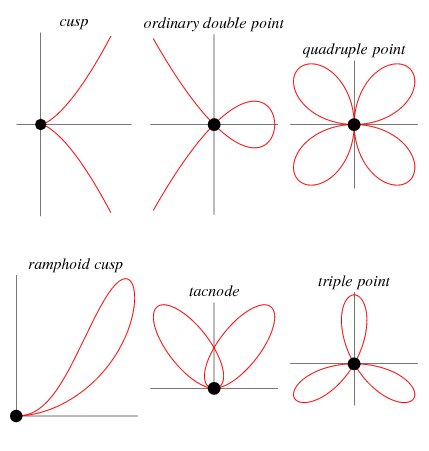 A singular point of an algebraic curve is a point where the curve has "nasty" behavior such as a cusp or a point of self-intersection (when the underlying field
A singular point of an algebraic curve is a point where the curve has "nasty" behavior such as a cusp or a point of self-intersection (when the underlying field
The following table gives some representative named curves that have various types of singular points at their origin.
| singularity | curve | equation |
| acnode | ||
| cusp | cusp curve | |
| crunode | cardioid | |
| quadruple point | quadrifolium | |
| ramphoid cusp | keratoid cusp | |
| tacnode | capricornoid | |
| triple point | trifolium |
Consider the following two examples. For the curve
the cusp at (0, 0) is a singular point. For the curve
Singular points are sometimes known as singularities, and vice versa.